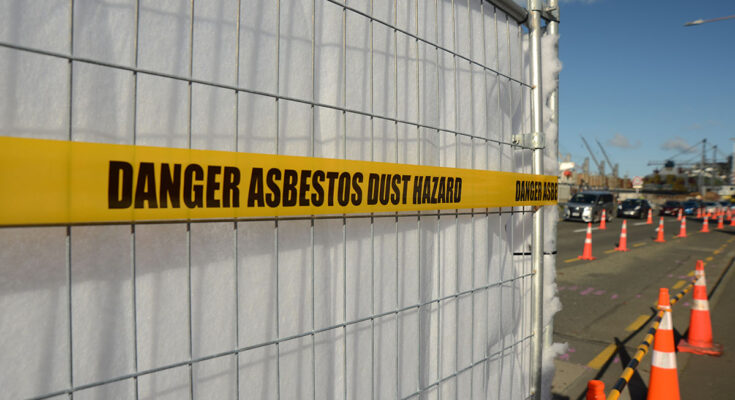Definition And Properties
Asbestos is a group of naturally occurring minerals known for their heat resistance and insulating properties. It was widely used in construction materials, especially in older homes, due to its durability and fireproof qualities. However, asbestos fibers can become airborne when disturbed, posing serious health risks.
Historical Use In Construction
From the 1930s to the 1990s, asbestos was commonly used in the military and civilian construction. It was found in various materials, including insulation, roofing, and flooring. Many homes built before the 1980s still contain asbestos, making it crucial for homeowners to be aware of its presence.
Regulatory Changes Over Time
Regulations regarding asbestos have evolved significantly. In the late 1970s, the U.S. government began to restrict its use due to health concerns. Despite this, asbestos remains legal in certain applications, which means older homes may still harbor this hazardous material. Homeowners should treat their homes as if they contain asbestos until a professional inspection confirms otherwise.
Health Risks Associated With Asbestos Exposure
Long-Term Health Effects
Asbestos exposure can lead to serious health issues that may not appear until many years later. The most significant long-term effects include:
- Mesothelioma: A rare and aggressive cancer primarily linked to asbestos exposure. Veterans are disproportionately affected by mesothelioma, accounting for 30% of cases despite being only 7% of the U.S. population.
- Lung Cancer: This is another severe condition that can develop from inhaling asbestos fibers.
- Asbestosis: A chronic lung disease caused by the accumulation of asbestos fibers in the lungs, leading to scarring and breathing difficulties.
Common Asbestos-Related Diseases
In addition to mesothelioma, other diseases associated with asbestos exposure include:
- Colorectal Cancer
- Ovarian Cancer
- Pleural Plaques: These are deposits of collagen that form in the lining of the lungs.
Symptoms To Watch For
Symptoms of asbestos-related diseases can take decades to manifest. Early signs may include:
- Chest pain
- Difficulty swallowing
- Persistent dry cough
- Unexplained weight loss
- Fever
Veterans who suspect they have been exposed to asbestos should consult a healthcare professional for evaluation and potential screening. Early detection can be crucial for effective treatment and management of these serious health risks. Mesothelioma Hope offers resources to those affected by this disease.
Identifying Asbestos In Older Homes
Common Locations Of Asbestos
Asbestos can be found in various parts of older homes. Here are some common areas where it may be present:
- Attic insulation (often vermiculite)
- Vinyl floor tiles and adhesives
- Cement roofing materials
- Window caulking and glazing
- Plaster and siding materials
- Heating duct insulation
- Ceiling tiles
- Hot water and steam pipes
- Flue pipes
- Textured paint
- Old appliances like furnaces
Signs Of Asbestos Damage
Homeowners should be aware of signs that may indicate asbestos damage:
- Cracks or chips in materials that may contain asbestos.
- Dust or debris that appears to be from insulation or other materials.
- Deteriorating or frayed insulation around pipes or ducts.
- Peeling or chipping paint, especially if it is textured.
Professional Inspection Recommendations
Identifying asbestos can be challenging for homeowners. It is advisable to:
- Hire a certified asbestos professional for a thorough inspection.
- Avoid disturbing any suspected materials until they have been tested.
- Use a home asbestos test kit if necessary, but be cautious and follow safety guidelines.
If asbestos is confirmed, it is crucial to consult professionals for safe removal or management. Mesothelioma Guide has more resources available for you..
Renovation Risks For Veterans
DIY Renovation Hazards
Veterans considering home renovations should be aware of the potential dangers associated with asbestos. When working on older homes, they may encounter materials that contain asbestos, which can pose serious health risks if disturbed. Here are some common hazards:
- Inhalation of Asbestos Fibers: Disturbing asbestos-containing materials can release harmful fibers into the air, which can be inhaled.
- Improper Handling: Many veterans may not have the training to safely handle asbestos, increasing the risk of exposure.
- Lack of Awareness: Some may not realize that certain materials, like insulation or floor tiles, may contain asbestos.
Safe Removal Practices
If veterans find asbestos in their homes, it is crucial to follow safe removal practices to minimize health risks. Here are some recommended steps:
- Do Not Disturb: If the asbestos is in good condition, it may be safer to leave it undisturbed.
- Hire Professionals: Always consider hiring certified asbestos removal experts who are trained to handle hazardous materials safely.
- Use Protective Gear: If removal is necessary, ensure that proper protective equipment, such as masks and gloves, is used.
- Follow Local Regulations: Be aware of and comply with local laws regarding asbestos removal and disposal.
Legal Protections For Veterans
Veterans may have specific legal protections when dealing with asbestos exposure. Here are some important points:
- Veterans Affairs (VA) Benefits: Veterans diagnosed with asbestos-related diseases may be eligible for medical benefits and compensation.
- Legal Assistance: Many organizations offer legal help to veterans who have been exposed to asbestos, ensuring they receive the support they need.
- Awareness of Rights: It is essential for veterans to understand their rights regarding housing and health safety, especially in older homes.
Preventive Measures For Asbestos Exposure
Avoiding Disturbance Of Asbestos Materials
To minimize the risk of asbestos exposure, it is crucial to avoid disturbing any materials that may contain asbestos. Here are some key points to consider:
- Do not saw, sand, or scrape materials that might have asbestos.
- Avoid sweeping or vacuuming areas where asbestos might be present.
- Keep children away from areas that may contain asbestos materials.
Using Protective Equipment
If there is a need to work in areas where asbestos may be present, using the right protective gear is essential:
- Wear a proper mask designed to filter out asbestos fibers.
- Use protective clothing that can be disposed of after use to prevent contamination.
- Ensure that all equipment is cleaned thoroughly after use to avoid spreading fibers.
When To Seek Professional Help
If there is any suspicion of asbestos in the home, it is best to consult with professionals:
- Hire trained experts for inspections and testing of suspected materials.
- If renovations are planned, ensure that a professional assesses the area for asbestos before starting work.
- Contact local authorities for guidance on safe removal practices if asbestos is confirmed.
By following these preventive measures, veterans and homeowners can significantly reduce the risk of asbestos exposure, ensuring a safer living environment. Awareness of the dangers associated with asbestos is vital, especially for those who may have been exposed during their service, as highlighted in discussions about mesothelioma veterans and their health risks.
Resources For Veterans Affected By Asbestos
Available Medical Benefits
Veterans who have been exposed to asbestos may qualify for various medical benefits from the VA for mesothelioma issues. These benefits can include:
- Free medical care for asbestos-related diseases.
- Monthly financial assistance to help cover living expenses.
- Access to specialized VA doctors who understand asbestos-related health issues.
Legal Assistance Options
Veterans can also seek legal help from firms like the Lanier Law Firm to navigate their rights and benefits. Some options include:
- Consulting with VA-accredited attorneys who specialize in asbestos cases.
- Filing claims for compensation related to asbestos exposure.
- Joining support groups that can provide guidance and resources.
Support Groups And Organizations
There are several organizations dedicated to helping veterans affected by asbestos. These groups can offer:
- Emotional support and community connections.
- Information on treatment options and health care resources.
- Advocacy for veterans’ rights regarding asbestos exposure.
Veterans are encouraged to reach out to these resources to ensure they receive the help they need. For more information, they can visit the page on veterans and mesothelioma to learn about symptoms, treatments, and available benefits.
The Importance Of Awareness And Education
Understanding Asbestos Risks
Awareness about asbestos is crucial, especially for veterans living in older homes. Asbestos can be harmful, and understanding its risks can help prevent serious health issues. Here are some key points:
- Asbestos is a known carcinogen: It can cause cancer and other serious diseases.
- Long-term exposure is dangerous: Even small amounts over time can lead to health problems.
- Education is vital: Knowing where asbestos might be found can help in avoiding exposure.
Community Awareness Programs
Communities can play a big role in spreading awareness about asbestos. Programs can include:
- Workshops: Teach homeowners about the dangers of asbestos.
- Information sessions: Provide updates on regulations and safe practices.
- Local campaigns: Raise awareness through flyers and social media.
Educational Resources For Homeowners
Homeowners should have access to reliable information about asbestos. Useful resources include:
- Government websites: They often provide guidelines on asbestos safety.
- Local health departments: Can offer advice and support.
- Support groups: Connecting with others can provide valuable insights and experiences.




